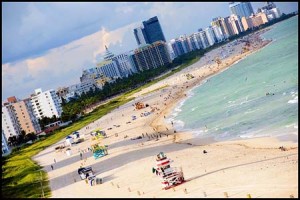The first quarter of 2011 might be Miami’s strongest three-month period since the housing bubble popped.
Original article Here
After the last six months of 2010 saw a cooling down after federal tax stimuli expired, inventory of both single-family homes and condominium units is falling dramatically.
“The market is ‘en fuego,'” meaning “on fire,” said Nelson Gonzalez, a senior vice president at Esslinger-Wooten Maxwell in Miami Beach. “I’m working seven days a week.”
Gonzalez said there was no comparison between the activity he saw in the first three months of 2010 and the same period this year.
“How do I compare a snail with a cheetah?” He said.
In the single-family market, for example, there were 3,348 closed deals in the first quarter, according to Miami MLS data provided to The Real Deal by the Keyes Company. That represents a nearly 9 percent increase over the same period in 2010, and a 173 percent jump over the first quarter of 2008.
“We’ve not only had a good, solid closing first quarter, but the second quarter will be outperforming any quarter we’ve seen in the last few years in units sales, because of what we’ve already seen that’s pending,” said Keyes CEO Mike Pappas.
The jump over the first quarter of 2010 was significant because it came without the help of federal tax stimuli, Pappas said. “Last year you were going up against the end of the stimulus tax credit. The volume we did in March was as big as any month since 2007.”
According to data from the Miami Association of Realtors, pending home sales (which include single-family homes and condos), jumped 18 percent last month compared to March 2010.
The activity hasn’t come without casualties, however. While volume has more than doubled since the time the bubble burst, prices are now down to about half of what they were, he said.
While the median sales price of a single-family home in Miami in the first quarter of 2008 was around $310,000, it’s now around $150,000.
In the city of Miami (as opposed to county-wide, which was the region covered in the rest of the data here), the median sales price was $199,600, according to the most recent 2011 numbers from Zillow.com, in the first quarter. That was a drop from a peak of $339,000 at the end of 2008.
Gonzalez said the activity he’d seen in Miami Beach’s high-end market was coming largely from buyers, typically end-users, afraid to miss the bottom.
“The people that had the money — and again, everything is all-cash — there’s not financing involved — are getting off the fence because they’re seeing that the bottom happened a year ago and don’t want to miss the boat at the bottom,” he said.


